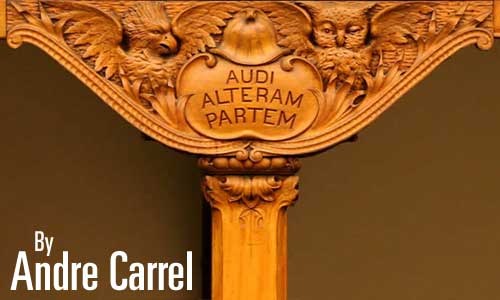Omnibus Bills: A Threat to Democracy
Omnibus Bills
Leadership, the economy, and the reliable stand-by issue of taxation are the issues political parties will likely focus on in the coming federal election. These are undoubtedly serviceable election campaign targets, but the question that ought to rank foremost in the mind of citizens concerns the ever expanding use of omnibus bills and its effect on the health of our democracy. The term “omnibus bill” is not foreign to reports on the conduct of the nation’s business in Ottawa, but there is no reference to it, or definition of it in Beauchesne’s Parliamentary Rules and Forms.
Michel Bédard, Office of the Law Clerk and Parliamentary Counsel, wrote a background paper on the subject (http://www.parl.gc.ca/Content/LOP/ResearchPublications/2012-79-e.htm). Bédard explains that the omnibus bill is a procedure to amend more than one law in a single step. The first recorded use in Canadian history of a process to amend several Acts by way of a single Act goes back to our first parliamentary session in 1868.
Over the decades the practice has raised concerns on more than one occasion. In 1923, for example, the Senate rejected the government’s attempt to secure the authority to construct 29 branch lines to the Canadian National Railway by way of a single Act. The opposition wanted each line to be approved by a separate Act. The government accepted the criticism and proceeded with the introduction of a series of separate bills.
In 1969, a century after its first use, Speaker Lucien Lamoureux ruled that it was not appropriate for the Speaker to determine if the omnibus bill process was proper or appropriate. Two years later, clearly troubled by the use of the process, Speaker Lamoureux expressed his concern:
“Where do we stop? Where is the point of no return? …[W]e might reach the point where we would have only one bill, a bill at the start of the session for the improvement of the quality of life in Canada which would include every single proposed piece of legislation for the session. That would be an omnibus bill with a capital “O” and a capital “B.” But would it be acceptable legislation? There must be a point where we go beyond what is acceptable from a strictly parliamentary standpoint … where an omnibus bill becomes more than an omnibus bill and is not acceptable from a procedural standpoint.”
The people we elect to represent us did not take heed. The abuse of the process accelerated unabated in the decades following Lamoureux’s warning. That abuse led to the 1982 two-week long division bell ringing debacle over the Energy Security Act. That unholy mess was finally resolved when the government agreed to split the bill into eight separate ones. A more recent abuse resulted in the 22-hour voting marathon in June 2012 over Bill C-38, the massive Jobs, Growth and Long-term Prosperity Act. This time, however, unlike 1982, the government used its majority in the House of Commons to push the bill through without a single amendment.
The need for an omnibus legislative process was evident in Canada’s first parliamentary session. In the absence of a constitutional or at least a regulatory framework to not only establish omnibus bill principles and define the purpose, but also demarcate limits for its use, the process has drifted so far away from its original intent as to become a legislative bullying process. We have not yet reached Lamoureux’s capital “O” and capital “B” stage, but we are headed in that direction.
The time is now for citizens to shape the agenda for the coming federal election with a call on all political parties to include their vision for constitutional definition of omnibus bills and limits on their use as a top priority in their election campaign program.


























